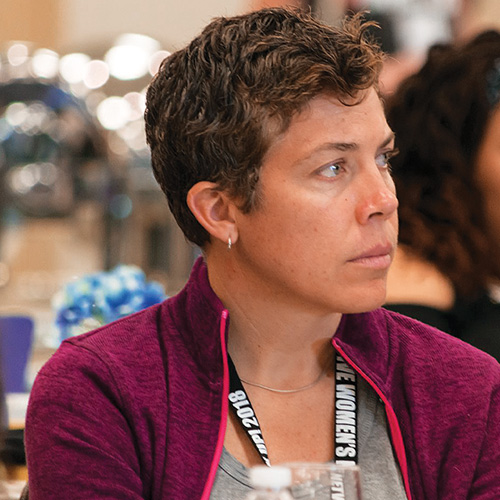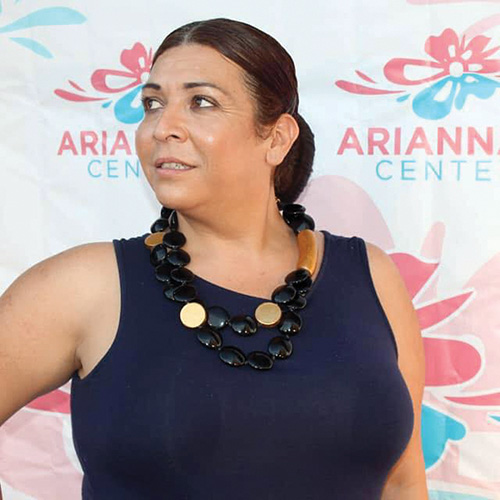Author’s content warning: violence, isolation,systemic oppression. If you are feeling threatened right now, in the U.S. you can call the National Domestic Violence hotline: 800-799-SAFE (800-799-7233); or TTY, 800-787-3224, or call 911 if it is safe to do so. You can also search for a safe space, DomesticShelters.org.
Arkansas-based advocate Tiommi Jenae Luckett said it best, and bluntly, in a recent conversation: “Under the auspices of COVID, every bad thing that could happen has happened.”
At the time of this writing, the world just crested one million known deaths from COVID-19—a pandemic to which the United States’ federal response has been so counterproductive that the nation quickly rose to lead the world in case numbers and fatalities. The disease has catalyzed months of relative confinement to homes, massive job losses, disarray in education systems, isolation from loved ones, few to no social outlets—a total upending of societal norms, which many experience alongside their rage at the current administration’s denial, grief for those who have lost their lives, and fear of potentially being next.
We are also facing the most contentious and consequential presidential election of our lifetimes, as uprisings nationwide bring attention to state violence and murder of Black people—and face brutal repression by authorities. Then there is climate change, culprit for this season’s historically devastating fires in the western U.S. and catastrophic storms and flooding in the southeast.
[Addressing intimate partner violence] is complex all the time; add COVID to it and it makes it infinitely more difficult. People can’t get any kind of breather from each other, because they’re all stuck at home.” —Katy Davis, PhD
The link between crises and the uptick in rates of domestic violence is well documented; COVID-19 follows that model and brings its own unprecedented challenges. “[Addressing intimate partner violence] is complex all the time; add COVID to it and it makes it infinitely more difficult,” said Katy Davis, Ph.D., of the Women’s HIV Program (WHP) at the University of California, San Francisco. “People can’t get any kind of breather from each other, because they’re all stuck at home.”
Initial drops in calls to domestic violence services (which have remained largely open, if modified, during the pandemic) and police reports turned out to be a negative sign: Victims were often unable to reach out for help because those abusing them were constantly present. Some reports indicate that instances of physical violence that were reported were more severe: strangulations, stabbings, burns.
But abuse is not limited to physical violence or visible injury. Violence can take numerous forms, including threats; emotional or economic abuse; isolation; canceling health insurance or withholding medications; claiming a partner has COVID-19 in order to restrict contact with their children, or exerting power by blocking the use of prevention tools like soap or hand sanitizer.
“COVID-19 has given abusive individuals additional tactics and excuses for maintaining control,” said Ashley Slye, who works at the intersections of HIV and domestic violence as the Positively Safe program manager at the National Network to End Domestic Violence (NNEDV). Globally, UN Women—the United Nations entity charged with promoting gender equity and empowerment—has sounded the alarm about a “shadow pandemic” of violence against women and girls mounting amidst this worldwide crisis.
Intimate partner violence (IPV) is already a concern of stunning proportions among women with HIV. Groundbreaking studies in 2012 revealed what many advocates and providers in the community knew anecdotally: that most women with HIV had experienced some form of violence or trauma. Women with HIV were twice as likely as the general population of women to experience IPV, five times more likely to endure sexual abuse, and five times more likely to have PTSD (post-traumatic stress disorder, commonly associated with survivors of war) as a result of these and numerous other forms of traumatic disruption to their lives. These conditions were found to negatively affect women’s physical health, as well as their mental wellbeing and quality of life.
These findings spurred a raft of advocacy up to the federal level to address this epidemic of violence, and promote healing in medical and service settings through trauma-informed care. This approach strives to recognize and address, in every area of service delivery (including the physical environment of the center, and all staff on the premises), the profound impact of trauma not just on health outcomes, but on individuals’ ability to access care at all.
Positive Women’s Network–USA (PWN) has been a longtime leader in this movement, spearheading the annual National Day of Action to End Violence Against Women with HIV on October 23. Early in the pandemic, PWN assembled a resource page on their website addressing the “crisis within a crisis” of IPV, HIV, and COVID-19.
Luckett, a PWN staff member, shared recollections of the initial days of lockdown: “When COVID first hit, it was a scramble to try to find resources for these women”—places where someone leaving a violent situation could be safe not only from abuse and COVID-19, but also from the trauma of discrimination.
A May 2020 piece on TheBody.com on PWN’s early pandemic response related a story of a member of a transgender experience who left an abusive partner, only to end up in a shelter run by a Christian organization. They required her to hide her gender identity and present as the sex she was assigned at birth in order to stay there.
“As someone who has experienced intimate partner violence, I know as a Black trans woman I’m blessed to have my own space,” said Luckett. “I’m able to set boundaries for myself. That’s not the case for everybody.”
For Angie Espinoza, unfair housing, limited social services, employment insecurity, and lack of child care all interact to compound risk for domestic violence under COVID-19 conditions.
“Many of our clients are paying anywhere from $500 to $1,000 [per month] for a single room that may have two adults and three-plus kids,” explained Espinoza, who coordinates domestic and intimate partner violence services at Queens, New York’s Voces Latinas, which empowers and trains immigrant Latinas to address HIV and violence in their communities. “There is no space for privacy, and [it] puts more people at risk for abuse.”
Many individuals may be coping with crisis, and their own trauma, by increasing substance use—which can heighten violence risk. “Usually, the partners would be ‘bread-winners’ and so the clients had some time away from the abuse,” Espinoza went on in our email conversation. “But without work, families are stuck together in confined spaces. Partners are abusing more of substances such as alcohol, which impacts not only clients but their children.”
Dramatic scale-up of telehealth engagements has been made possible in part by relaxed federal regulations around distance appointments. For those isolated by not just COVID-19 but also an abusive partner controlling contact with loved ones, a telehealth visit with a provider may be their sole contact with the outside world. It’s also an opportunity for abuse to be witnessed and assessed.
But an abusive partner may monitor a survivor’s devices and messages, or appointments themselves, making it impossible to engage honestly. Davis shared an anecdote from a WHP provider: “[They] talked about doing a Zoom [video] meeting with a patient who we know is in an abusive relationship, and seeing her partner open the door every few minutes to check in on what’s going on, in a really creepy and disturbing way.”
WHP providers exercise caution with what is said on these visits and follow clients’ lead as to whether they can speak freely. In many cases, partner interference may make video meetings impossible.
Such conditions complicate safety planning for survivors. But many survivors may not consider leaving—in part because they have no other access to some resource their partner provides. “For trans people in abusive relationships who have lost their jobs during the pandemic, they are now more dependent on their abusers than ever,” said Arianna Lint of Arianna’s Center, which serves a largely undocumented population of Latinx people of trans experience in South Florida. “Without an income, many are trapped in violent relationships.”
Our clients develop trusted relationships with their trans peer navigators and the pandemic has, to some extent, denied them this support.” —Arianna Lint
In one recent instance at WHP’s clinic, Davis related, a woman’s abusive partner was her caregiver. “She couldn’t care for herself; she needed him there to help her get through her day-to-day medications,” Davis explained. When police removed him from the client’s home, relief soon turned to panic, and she took steps for him to be able to return to the apartment.
While Davis noted that these kinds of cases are hardest, with the tension between respecting a client’s agency and fearing for their safety, she conceded: “If the only solution we provided was ‘you need to get away from that partner,’ we wouldn’t be engaged with our patients.”
One solution, said Davis, is “really trying to listen to the patient, while at the same time providing education, and talking to them about how they deserve to be in a healthy relationship, they deserve to be treated with respect and kindness—and trying to model that in our relationship with them.”
This depth of engagement is key to a trauma-informed approach to care: Providers and clients know one another well, and there is a level of trust. WHP and Voces Latinas both employ trauma-informed practices—Davis directs the trauma-informed care initiative at WHP, also a key source of research on women, HIV, and trauma. That foundation has helped these organizations prepare clients for the dizzying pivot to telehealth and virtual community engagement—which included bridging a massive digital divide.
When Voces Latinas’ staff shifted to conducting their domestic violence and women with HIV support and education groups online, they knew their clients would need help getting the necessary equipment. “It is so important for them to still stay connected to those groups, to continue to hear the message,” said Nathaly Rubio-Torio, LMSW, the organization’s executive director. COVID-19 relief funds were a lifeline. “We applied them towards basic needs like food and rent assistance, but we also designated some funds toward technology,” she explained. Her staff spoke to each client about their specific digital needs, whether it was a phone with video capability, an internet connection at home, or support exploring Zoom.
“Even these earpieces,” Rubio-Torio said, gesturing to the headphones she and I were both wearings during our own video conversation, “is something we don’t even think about, that they need in order to even participate in a group.” They were able to purchase or provide what clients needed—including numerous sets of earbuds. For clients in close quarters with concerns about privacy, or their household knowing what groups they participate in, earpieces provide some relief.
“Whether they’re cooking, or taking care of the kids, they have their group in their ear”—even if a woman is only able to listen, or speak up quietly on a rare occasion. “That’s been extremely helpful,” said Rubio-Torio, “that avoids isolation.”
At WHP, in San Francisco, the staff engaged in a comparable ongoing process to assess clients’ barriers to staying connected, technological or otherwise, and support them in managing those obstacles. Clients and staff at WHP are accustomed to a high level of contact with the program—through appointments with providers or social workers and educational groups, but also social activities planned by the patient leadership team, or sharing a meal. Virtually all those traditional points of contact have dissolved due to COVID-19.
WHP staff have maintained a weekly online education group on Wednesday mornings—a time when the clinic would normally be teeming with community members enjoying the weekly breakfast and other activities. “People can tune into Zoom, sort of a replacement for being able to come in and hang out,” Davis explained. But it’s not the same as in-person engagement—which WHP made very easy for clients to tap into. “We were cultivating a really strong community,” said Davis. “Now all of a sudden, we are discouraging people from coming in—which was our major mode of connecting with people.”
Many individuals may be coping with crisis, and their own trauma, by increasing substance use—which can heighten violence risk.
Though Florida’s Arianna’s Center provides and refers to virtual services, Lint also lamented the suspension of in-person support. “It gives case managers an opportunity to assess the clients’ situations,” she said. “Our clients develop trusted relationships with their trans peer navigators and the pandemic has, to some extent, denied them this support.”
On the other side of the coin, WHP providers have found that for some clients—particularly young women—the pandemic approach to care and services is a better fit for their lifestyle. They may have struggled to make their clinic visits in the past, but a therapist or provider calling them for their appointment means they don’t have to travel or even remember they had an appointment scheduled. “They’re actually getting a service they weren’t getting before, because we were asking them to come in, and that wasn’t really feasible for them,” Davis said. “There has been increased access.”
Criminalization and racism are persistent forms of trauma that have been amplified in this era. Similar to HIV, generations of racial inequity and repression have led to conditions in which Black, indigenous, and other people of color become sicker and die more often from COVID-19 than their white counterparts. And reports are showing that Black people are more frequently targeted and criminalized for alleged violations of safety measures such as social distancing.
“That ties into the [Trump] administration … in their lack of response regarding COVID and their immediate response to deploying the military against Black and Brown bodies,” said PWN’s Luckett, speaking of violence against participants in recent anti-racist uprisings. “As a Black person, I can’t help but see the anti-Blackness of it all being amplified because of COVID.”
Immigration status can become a tool of control by an abusive individual, who may threaten to call Immigration and Customs Enforcement (ICE) on a partner who is undocumented, and can also be a deterrent from reporting violence to police, for fear of detention.
For Black people and immigrants experiencing violence in their homes, the police may be the last people they want to involve. “We’ve seen time and time again that police intervention can lead to unwarranted incarceration and death for people of color, particularly Black people,” said Slye of NNEDV. According to Slye, many involved in the domestic violence response are grappling with its connection to a criminal legal system deeply rooted in violence against Black and Brown people.
The Violence Against Women Act, co-authored by current presidential candidate Joe Biden, was passed as part of the 1994 crime bill, Slye reminded. Funding for domestic violence response has been delivered through fight-crime initiatives and administered through the Department of Justice.
“To improve our support, domestic violence organizations are likely going to have to change how we respond to survivors,” Slye concluded. “If we are telling survivors to call the police, are we being mindful that this may not be a safe option for them? Have we talked through all the options before we get to that recommendation? Are there other things that we can be doing as a community to support survivors?
“[How are we] addressing the systems and how they have harmed survivors—and really, have they actually helped us end domestic violence?”
In the U.S., while the COVID-19 pandemic continues to rage, businesses and services are going through their paces of reopening—for better or worse. But the crisis and its fallout are far from over.
The need for providers to hone their awareness of abuse that may be taking place in their clients’ homes is unlikely to dissipate. One place to begin is a guide for telehealth providers working with clients experiencing abuse during COVID-19, published by the LEAP (Look to End Abuse Permanently) Program and accessible online alongside numerous trauma-informed anti-violence resources for professionals at leapsf.org.
As a result of the drastic measures required during stay-at-home orders, many service providers may have additional useful tools in their toolbox of keeping clients engaged in care and support—and new insights into clients’ needs.
“It’s transforming the way we’re going to provide services,” said Rubio-Torio of Voces Latinas. “Now, not everyone will need to leave their home, their kids, their family life to come in and get a service here.”
Davis agreed: “Even if and when things go back to normal … we will be much more open to doing things virtually for patients who clearly prefer or need that,” she said. “That has been one real benefit: [to see that] we weren’t actually reaching everyone the way we were doing things before.”




